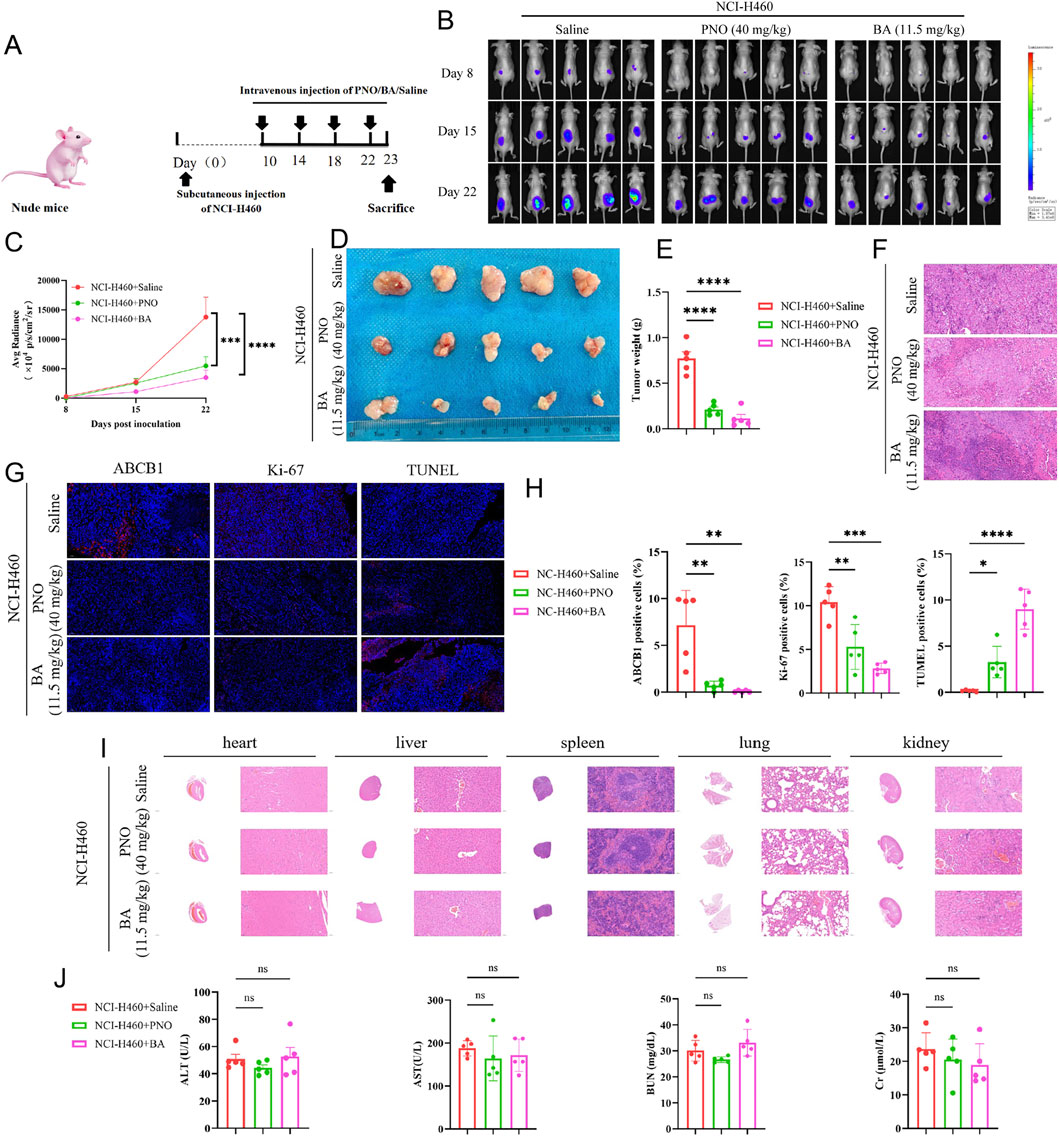- 1Department of Immunology, Guizhou Medical University, Guiyang, China
- 2Tumor Immunotherapy Technology Engineering Research Center of Guizhou Medical University, Guizhou Medical University, Guiyang, China
- 3School of Public Health, the key Laboratory of Environmental Pollution Monitoring and Disease Control, Ministry of Education, Guizhou Medical University, Guiyang, China
- 4Department of Anatomy, Guizhou Medical University, Guiyang, China
- 5Guizhou Prenatal Diagnsis Center, The Affiliated Hospital of Guizhou Medical University, Guiyang, China
- 6Department of Nursing, Guiyang Healthcare Vocational University, Guiyang, China
- 7School of Clinical Medicine, Guizhou Medical University, Guiyang, China
- 8Department of Thoracic Surgery, The Affiliated Hospital of Guizhou Medical University, Guiyang, China
A Correction on
The active constituent of pine needle oil, bornyl acetate, suppresses NSCLC progression by inhibiting the PI3K/AKT/ABCB1 signaling axis
by Wu J, Ren J, Wang L, Yang Z, Wang X, Tu Z, Liu X, Wang Y, Cao Y, Zhu X, Li L, Lu M, Zhang Y, Wu J and Cao Y (2025). Front. Pharmacol. 16:1653461. doi: 10.3389/fphar.2025.1653461
There was a mistake in Figure 5B as published. During a recent review of the figures, we discovered a duplication in Figure 5B, specifically in the panel showing the in vivo imaging results of the saline control group on Day 22. The images for the third and fourth mice were inadvertently repeated during the figure preparation process. We have carefully rechecked the original data and confirmed that the error occurred during figure assembly and layout, and not in the experimental data itself. The underlying findings and conclusions of the study remain valid and unaffected. The corrected Figure 5 appears below.

Figure 5. Borneol acetate inhibits NCI-H460 tumor growth in vivo. (A) Experimental schema: Nude mice received subcutaneous injections of 2 × 106 NCI-H460-luciferase cells. Vehicle, PNO, or BA were administered via tail vein. Tumor progression was monitored by bioluminescence imaging (BLI); tumors and organs were harvested terminally. (B) BLI pseudocolor images on days 8, 15, and 22. (C) Quantified fluorescence intensity. Data represent mean ± SD (*p < 0.001, p < 0.0001). (D) Excised tumors. Reduced BA group volume demonstrates tumor suppression. (E) Tumor weight quantification (p < 0.0001). (F) H&E-stained tumor sections. (G) Immunofluorescence staining of tumor sections: ABCB1 (blue, resistance marker), Ki67 (green, proliferation marker), TUNEL (red, apoptosis marker). Scale bar: 50 µm. (H) Quantified immunofluorescence intensity. Data represent mean ± SD (**p < 0.01, ***p < 0.001, ****p < 0.0001). (I) H&E staining of liver, spleen, lung, and kidney sections. (J) Liver/kidney function indices (ns p > 0.05).
The original article has been updated.
Generative AI statement
Any alternative text (alt text) provided alongside figures in this article has been generated by Frontiers with the support of artificial intelligence and reasonable efforts have been made to ensure accuracy, including review by the authors wherever possible. If you identify any issues, please contact us.
Publisher’s note
All claims expressed in this article are solely those of the authors and do not necessarily represent those of their affiliated organizations, or those of the publisher, the editors and the reviewers. Any product that may be evaluated in this article, or claim that may be made by its manufacturer, is not guaranteed or endorsed by the publisher.
Keywords: bornyl acetate, NSCLC, PI3K/AKT, ABCB1, tumor progression
Citation: Wu J, Ren J, Wang L, Yang Z, Wang X, Tu Z, Liu X, Wang Y, Cao Y, Zhu X, Li L, Lu M, Zhang Y, Wu J and Cao Y (2025) Correction: The active constituent of pine needle oil, bornyl acetate, suppresses NSCLC progression by inhibiting the PI3K/AKT/ABCB1 signaling axis. Front. Pharmacol. 16:1730938. doi: 10.3389/fphar.2025.1730938
Received: 23 October 2025; Accepted: 30 October 2025;
Published: 13 November 2025.
Edited and reviewed by:
Vincent Kam Wai Wong, Macau University of Science and Technology, Macao SAR, ChinaCopyright © 2025 Wu, Ren, Wang, Yang, Wang, Tu, Liu, Wang, Cao, Zhu, Li, Lu, Zhang, Wu and Cao. This is an open-access article distributed under the terms of the Creative Commons Attribution License (CC BY). The use, distribution or reproduction in other forums is permitted, provided the original author(s) and the copyright owner(s) are credited and that the original publication in this journal is cited, in accordance with accepted academic practice. No use, distribution or reproduction is permitted which does not comply with these terms.
*Correspondence: Jieheng Wu, aW1tdW5ld2poQDE2My5jb20=, d3VqaWVoZW5AZ21jLmVkdS5jbg==; Yu Cao, Y2FveXVAZ21jLmVkdS5jbg==
†These authors have contributed equally to this work
 Jieheng Wu
Jieheng Wu Jiaming Ren1,3†
Jiaming Ren1,3†